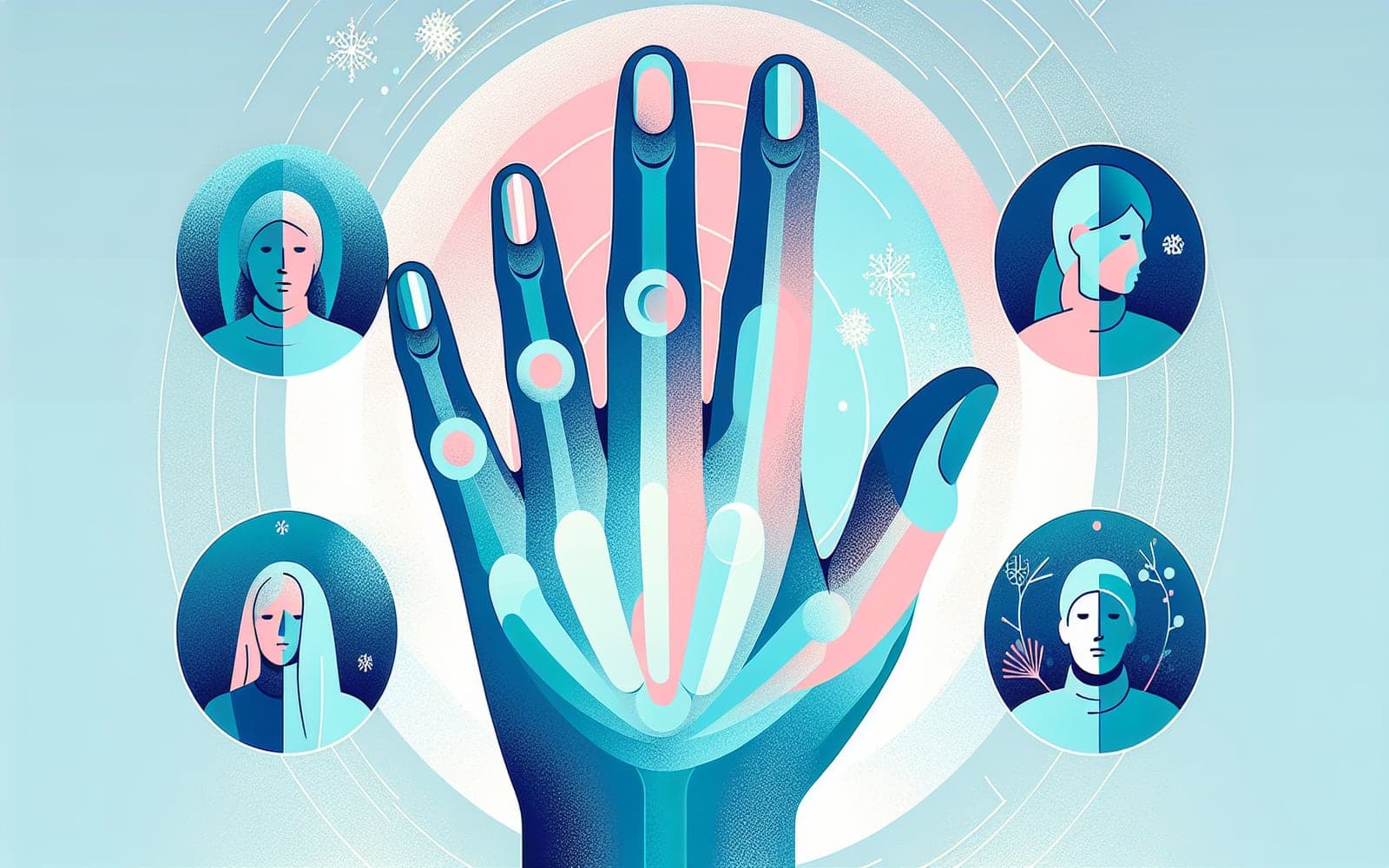Raynaud's Phenomenon: When Your Fingers Turn Blue in the Cold
Raynaud's Phenomenon: When Your Fingers Turn Blue in the Cold
What's This About?
Raynaud's phenomenon causes some areas of your body, usually your fingers and toes, to feel numb and cold in response to cold temperatures or stress. But what exactly is happening in your body during a Raynaud's attack?
Contents
- The Three-Color Change
- Primary vs. Secondary Raynaud's
- What Triggers an Attack?
The Three-Color Change
During a Raynaud's attack, affected areas of your skin usually first turn white as blood flow decreases. They may then turn blue as blood vessels constrict and tissues lack oxygen. As blood flow returns, the areas may turn red and throb or tingle. This classic 'tricolor' change is a hallmark of Raynaud's phenomenon.
Primary vs. Secondary Raynaud's
There are two main types of Raynaud's. Primary Raynaud's occurs on its own, without any underlying medical condition. It's generally less severe. Secondary Raynaud's is caused by an underlying disease or condition, like lupus or scleroderma. It tends to be more serious and can potentially lead to tissue damage.

What Triggers an Attack?
Cold temperatures are the most common trigger for Raynaud's attacks. Even brief exposure to cold, like reaching into a freezer, can set one off. Emotional stress is another frequent trigger. Some people find that repetitive motions, like typing or playing piano, can also bring on symptoms.
FAQs
Is Raynaud's common?
Yes, it affects up to 10% of people.
Who's most at risk?
Women and people living in colder climates.
Can Raynaud's be cured?
There's no cure, but symptoms can be managed.
The Bottom Line
While Raynaud's can be uncomfortable and sometimes painful, understanding your triggers and taking precautions can help you manage the condition effectively.
Additional References
- Wigley FM. Clinical practice. Raynaud's Phenomenon. N Engl J Med 2002; 347:1001.
- Garner R, et al. Prevalence, risk factors and associations of primary Raynaud's phenomenon: systematic review and meta-analysis of observational studies. BMJ Open 2015; 5:e006389.
This article has been reviewed for accuracy by one of the licensed medical doctors working for Doctronic.











